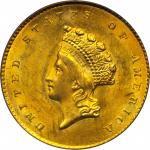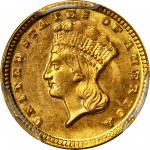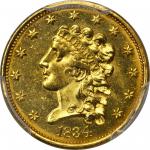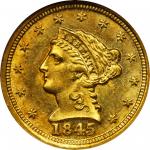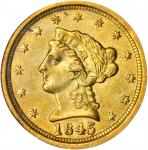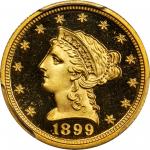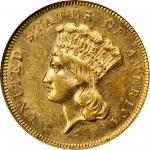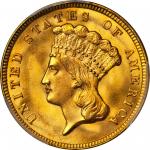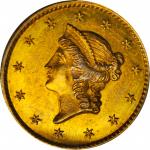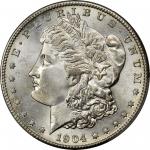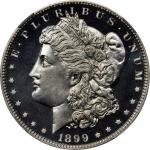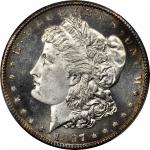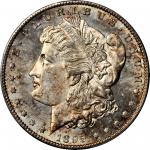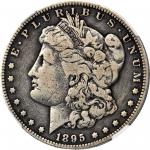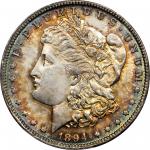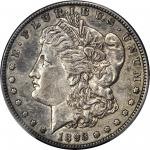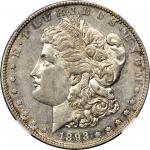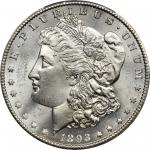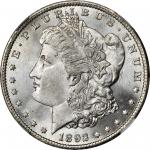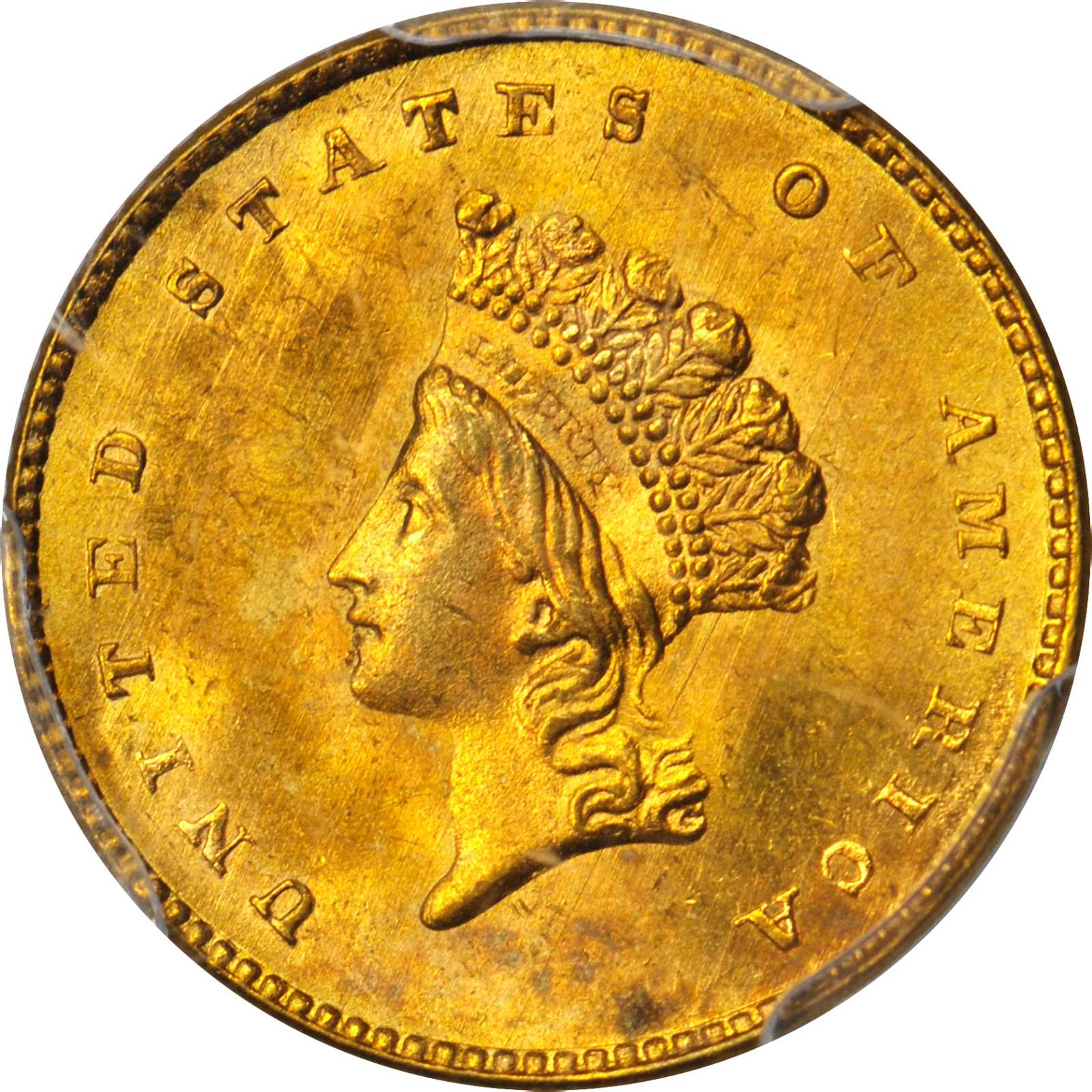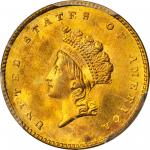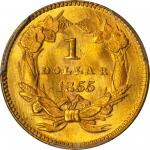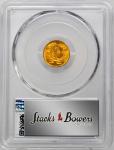1855 Gold Dollar. Type II. MS-65 (PCGS).This beautiful 1855 Type II gold dollar really needs to be seen to be fully appreciated. Both sides are highly lustrous with satiny, vivid, orange-gold surfaces. Striking quality is truly impressive for a Type II gold dollar, as both sides display universal razor sharp definition that even extends to the central devices. The high points of Libertys portrait are crisp, and the letters LL in DOLLAR and all four digits in the date are sharp to full. The clash marks in the fields around the central design elements that are almost always seen on gold dollars of this type are conspicuously absent here, and with both sides also expertly preserved the appearance is remarkably smooth. The superior technical quality and eye appeal would do justice to the finest gold type set.The Act of February 21, 1853, returned silver coinage to circulation in the East and Midwest by reducing the weight of the half dime, dime, quarter and half dollar to the point where their face value exceeded their bullion value. The coins were made subsidiary and were able to circulate freely in those areas for the first time since 1849. Mintages for all denominations from the half dime through the half dollar increased dramatically in 1853, with the Philadelphia Mint in particular churning out huge quantities of these coins. The effects on the gold dollar were significant and immediate, perhaps not surprising since the gold dollar was created in 1849 as a new denomination for coining California metal and also to help fill the void in commercial channels left by the withdrawal of silver.With silver coins returning to circulation in large numbers, the need for the gold dollar diminished rapidly. Yearly mintages at the Philadelphia Mint tapered off and by 1858 and through the end of the decade that facility was producing fewer than 200,000 examples per year. (The mintage for the 1860 amounted to a mere 36,514 pieces.) Additionally, the gold dollars small size was an issue, but with few alternatives in circulation during the early 1850s, the public was accepting. In 1854 Chief Engraver James Barton Longacre prepared a new design with an enlarged diameter of 15 millimeters, more convenient than the earlier 13 millimeter size. The weight of the denomination remained unchanged, so the coins were made slightly thinner. Unfortunately, the design that Longacre chose, although aesthetically pleasing, was in too high relief for the thinner planchets, and most examples displayed poor definition in and around the centers. The dies often clashed early and frequently during press runs, and many survivors exhibit numerous pronounced clash marks on one or (usually) both sides. The Mint abandoned the new design after only three years of production, and in the third -- 1856 -- only the San Francisco Mint struck examples of this type.Known in numismatic circles as the Type II gold dollar, mintages were generous only at the Philadelphia Mint in 1854 and 1855. The New Orleans and San Francisco mints achieved only modest deliveries in 1855 and 1856, respectively, while production at both the Charlotte and Dahlonega facilities in 1855 were extremely small (the 1855-D, for example, has a mintage of just 1,811 pieces). The 1854 and 1855 Philadelphia Mint issues are the obvious choices for representing this design in a gold type set and, indeed, examples are obtainable with ease in circulated grades. In lower Mint State grades the 1854 and 1855 issues are also plentiful, although the brevity of the type and its scarcity explains the premium enjoyed by these issues even in grades such as MS-61 and MS-62. The true rarity of the 1854 and 1855 Type II gold dollars emerges at the MS-65 level, where the striking problems combined with limited contemporary interest in preserving these coins explains the paucity of truly superb survivors such as that offered here.

